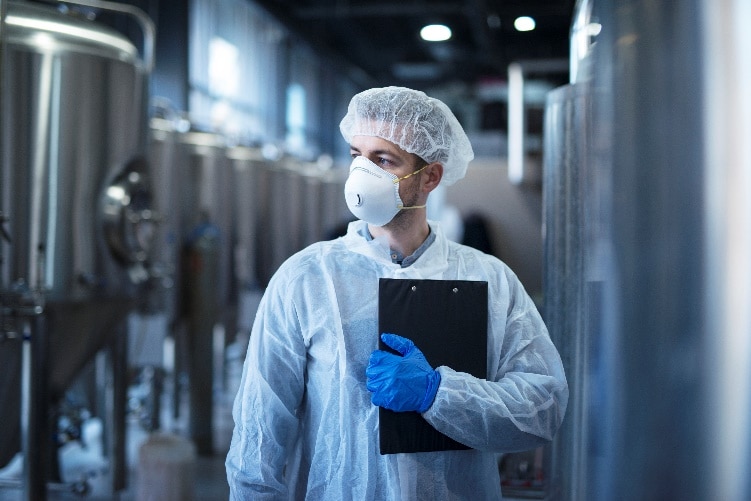The COVID-19 pandemic introduced drastic shifts in the way that manufacturers must operate — just as it has affected every industry, sector and nearly every aspect of our lives. To manage the pandemic, manufacturers introduced measures including social distancing within the facility and remote work for office personnel. A confluence of factors during the pandemic led to decreased production for some non-essential manufacturers as well: stay-at-home orders reduced production capacity, while a significant drop in demand led to factories sitting idle.
Even when light appears at the end of the tunnel, the effects of coronavirus in manufacturing will likely be longstanding — much as the responses to previous history-making events such as the Great Recession, 9/11, World War II and the Great Depression started as short-term adaptations that eventually became permanent shifts. In the post-COVID-19 world, there will be a “new normal” to which manufacturers will have to adjust to survive. What factors will make up this new normal? Keep reading.
How will the post-COVID world look?
New approaches to safety-focused manufacturing practices will form the backbone of the post-coronavirus landscape in manufacturing — much as these safe practices have driven the first steps toward recovery. Safety in manufacturing is nothing new. Every responsible manufacturer considers safety as a foremost responsibility in the operation of a facility, as workers are the most important resource and consideration in any business. While safety practice previously focused on machine safety, proper floor procedures, safety-focused maintenance and training, and more, the post-COVID world adds health to that list.
Safety practices and employee health and sanitation products in the post-COVID facility might include:
- Social distancing: Line workers and other employees will be situated 6 feet from one another.
- Hygiene: Proper handwashing and disinfecting procedures will be introduced and reinforced through signage, training, and availability of handwashing and sanitizing stations throughout a facility.
- Masks: In indoor scenarios where distancing is not possible, mask-wearing may be encouraged or required for the safety of all employees.
- Ventilation infrastructure: While ventilation has always been a critical consideration in facilities — for worker comfort and safety as well as machine operation — ventilation and air circulation will become even more of a concern to combat the risk of stagnant indoor air.
- An increase in remote work possibilities: While remote work is a natural fit for office professionals and knowledge-focused functions, it has traditionally not been seen as a possibility for more hands-on positions. While the fully remote facility is a distant possibility — if feasible — the post-COVID-19 facility may see a more innovative approach to remote work. This could include remote diagnostics, troubleshooting, automation management and more.
In the next section, we will look at how technology will be front and center in facilitating many of these new safety measures — helping workers remain healthy and safe as they execute tasks.
The role of technology in manufacturing safety
Technology has long played a major role in manufacturing safety; the post-COVID shift will be no different. Technology applications to address coronavirus in manufacturing and the post-COVID landscape might include:
- Sensors for remote performance monitoring: Sensors have become more and more commonplace in manufacturing. It is likely that they will be even more of “the norm” in post-COVID facilities. Sensors allow for detection of potential maintenance issues, accurate tracking of cycles and usage for preventive maintenance purposes, and more. All can be monitored remotely, reducing the need for personnel on-site.
- Smart machines for remote performance monitoring: Much like sensors, smart machines can extract and provide vast amounts of data about equipment and process performance. They can transmit this data to analysis servers as well as real-time monitoring stations, which can be located anywhere — not just inside the facility.
- Connectivity upgrades: The 5G revolution is beginning, and will be the impetus for the next major advance in communications and connectivity. With reliable, widespread 5G networks, facilities will be able to transmit more data with maximum reliability and responsiveness, to monitoring and response centers located anywhere. Off-site personnel can identify and coordinate the right times for on-site maintenance, maximizing the health and safety of all personnel.
- Supply chain examination: The pandemic exposed vulnerabilities in standard offshore, extensive supply chains — especially in scenarios where critical components were impossible to source or were back-ordered for weeks or months. Post-COVID, there will be an interest in more direct, transparent supply chains, which will also lead to an increase in reshoring.
- Automation upgrades: As facilities reshore operations, automation will continue to increase in facilities. Long an efficiency and safety driver in manufacturing, automation will also reduce the need for on-site personnel, carrying out tasks in the facility with the potential to be monitored and operated from an off-site location.
- Computerized maintenance management systems (CMMS): CMMS is the most effective way to manage maintenance, inventory, MRO, personnel, etc. They offer vast potential for remote and distanced management in the safety-focused facility. CMMS can ensure that personnel are only on-site when necessary, and can reduce personnel idle time waiting to perform a task.
Navigating the new normal
At ATS, we offer a broad range of maintenance and technical solutions to help you navigate the new normal and keep the focus on employee health and safety. We are extensively experienced in maintenance technology including sensors, smart equipment and CMMS implementation. ATS can also help expand or upgrade your automation technology. Our results-focused solutions are tailored to your needs, concerns and requirements — and are backed by our decades of experience in maintenance services. To learn more Contact us.


